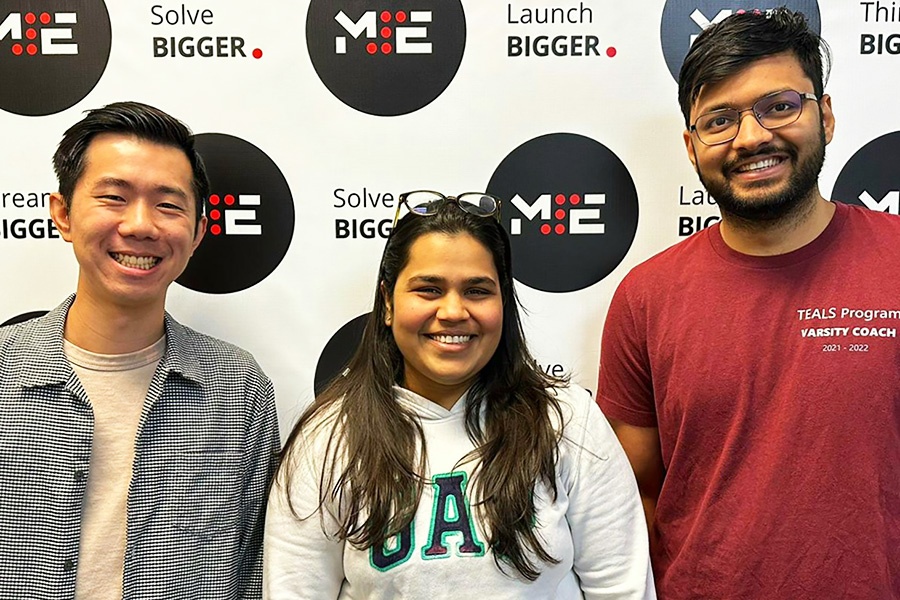MSE Team Takes Home Top Prize at Architecture Competition
By Jen Potter
For the fourth time in the last five years, a team of graduate students from the Software and Societal Systems Department’s Master of Software Engineering (MSE) Professional Programs has placed in the top three at the Community of Information Technology Architecture Practitioners (CITAP) Student IT Architecture Competition (SITAC).
Sponsored by numerous tech companies, the competition attracts undergraduate and graduate participants from around the globe. By the end of the four month long process, the field of contenders had narrowed to ten teams. In the end, it was Carnegie Mellon team members Eshita Agarwal (MSE), Gaurav Agerwala (MSE), and Hai-Hsiang (Henk) Hsiung (MSE), with the guidance of industry mentor Gaurav Mathur, Senior Manager at Monitor Deloitte, who claimed first place for their impressive submission and presentation.
The competition, now in its eighth year, assigned each team the task of developing an architectural solution for a volunteer based non-profit organization that uses a website to build awareness of their mission and to promote volunteer participation. The mission of the fictional organization, based on a real-world analog, is to “Foster togetherness and Sewa (selfless giving) for the welfare of society” and by doing so, nurture empathy for less fortunate members of one’s community. The organization encourages engagement in the community through the process of sharing resources via in kind donations, such as non-perishable food items, rather than “donating to the needy.”
Each team was provided a brief that outlined the current structure and operations of the volunteer run organization, the opportunities the organization wished to explore, and a delivery schedule that called for problem scoping to architectural diagrams to execution plans, culminating in a final presentation.
The decision to participate in the competition was obvious for the members of the MSE team. “We all had a common goal of pursuing architecture at some level in the future before learning about the competition,” Eshita said. “And had already decided to take the Advanced Architecture Design course as an elective. I spoke to past participants to get an idea of how much time [was required), what kind of commitment was needed. But then I still decided to participate! I think it was great teamwork that helped us throughout the journey.”
At times it took creative thinking to find effective and efficient ways to approach the added workload from the competition. “When [the competition started], we initially distributed the tasks and worked in a parallel fashion,” Henk said. “But as the competition progressed, we slowly converged to more team based activities. When I reflect back on the competition, it’s really nice to think that we started as three individuals working separately and then we slowly converged into one performing team.”
“One of the things I liked the most,” said Gaurav, “was that it gave me a reason to do research outside classwork targeted to a specific problem. It helped me to understand how that process would work in the real world.”
For Eshita Agarwal, it was “the tradeoff discussions, understanding the right approach to the problem. And especially because the problem statement was unique. It was not a high end, advanced technology product. It was a social cause, so we had to really fight our instincts to use a lot of advanced technology that we knew wouldn’t be sustainable for the organization.”
Henk added, “for me, my favorite part was our willingness to change with each new deliverable. I think that's how we probably learned that architecture is a living document because each deliverable basically forced us to focus on a specific aspect of the problem.”
While the competition was a lot of extra work, all three agreed that it was well worth the effort. “The experience of designing a few architectural reviews for the competition gave me more confidence when I was preparing for designing architecture and views for the studio project,” Henk said. “Being able to learn these concepts in class, and then apply them in the competition, and then again in the studio project, I think it really helped to solidify these concepts.”
To learn more about the SITAC, please visit the event website.